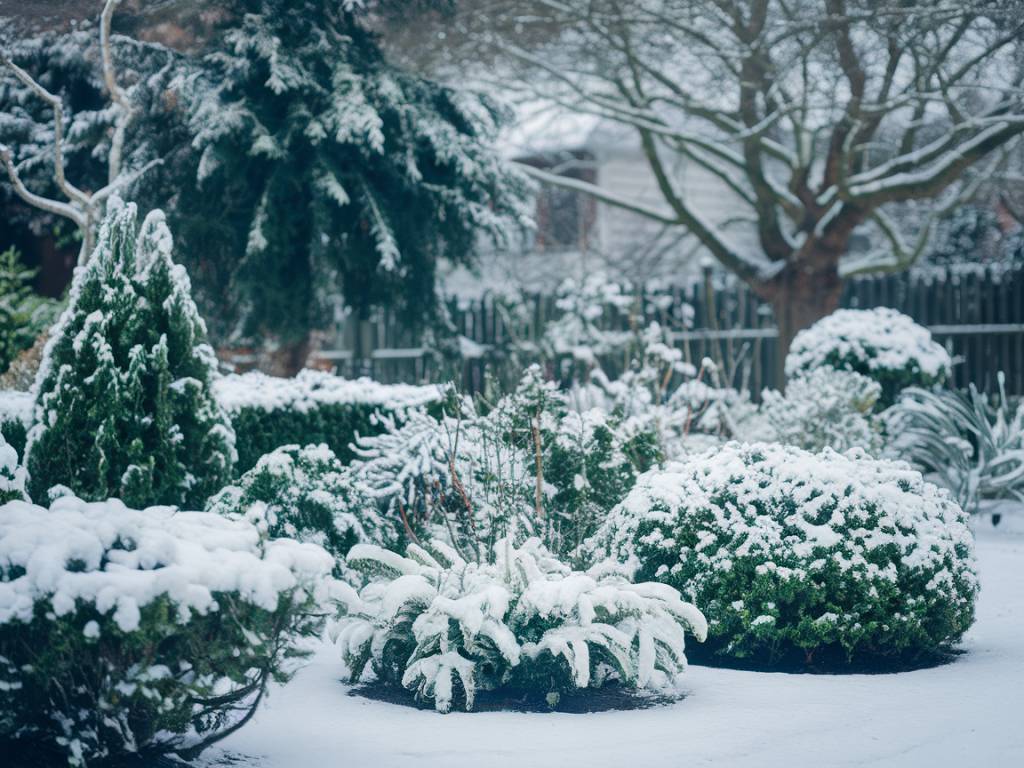As the cold months approach, it’s crucial to think ahead about protecting and nourishing our garden soil. One of the most effective ways to do this is by planting winter cover crops. Cover crops not only prevent soil erosion but also add essential nutrients back into the ground. This way, come spring, your garden will be ready to burst into life with hearty, healthy plants. In this article, I’ll share my favorite winter cover crops and why they are excellent additions to any garden.
Why Plant Winter Cover Crops?
Winter cover crops serve multiple purposes in the garden. They protect the soil from harsh winter conditions, enhance soil fertility, and help manage weeds. Personally, I’ve found that these crops also bring a beautiful touch of green to a winter landscape, which is always a welcome sight during the colder months.
Here are some key benefits of planting winter cover crops:
- Soil Erosion Prevention: The roots of cover crops bind the soil together, reducing the risk of erosion caused by wind or water.
- Weed Suppression: A thick cover of crops can outcompete and smother weeds, ensuring a cleaner garden come spring.
- Nutrient Enhancement: Certain cover crops can fix nitrogen from the air, enriching the soil for the upcoming planting season.
- Improved Soil Structure: The root systems can improve soil aeration and water infiltration, making the soil more receptive to spring plantings.
Top Winter Cover Crops for Your Garden
Choosing the right cover crops can make all the difference. Below, I’ll share some tried-and-tested options that work particularly well in the UK climate.
Rye (Secale cereale)
Rye is a robust winter cover crop that tolerates cold temperatures and poor soils. I particularly like using rye because its deep roots help break up compacted soil, and it grows rapidly, offering excellent ground cover.
Here are some benefits of planting rye:
- Cold Tolerance: Rye can survive extreme cold, making it perfect for harsh winters.
- Soil Improvement: Its deep root system breaks up compacted soil and improves soil structure.
- Compost Boost: When turned into the soil in the spring, it adds organic matter and nutrients.
Winter Peas (Pisum sativum subsp. arvense)
Winter peas are a nitrogen-fixing legume, making them an excellent choice for improving soil fertility. They are also quite hardy and can withstand light frosts. I’ve found that they are a fantastic addition to any cover crop mix.
Here’s why winter peas are effective:
- Nitrogen Fixation: They capture nitrogen from the air and convert it into a form that plants can use.
- Soil Erosion Control: Their sprawling growth habit provides good ground cover, preventing soil erosion.
- Organic Matter: When incorporated into the soil, they add valuable organic matter.
Crimson Clover (Trifolium incarnatum)
Crimson clover is a beautiful and effective cover crop that not only enriches the soil but also attracts beneficial insects. It’s one of my favorites because of its vibrant red flowers and excellent nitrogen-fixing qualities.
Benefits of crimson clover include:
- Nitrogen Fixation: Like winter peas, crimson clover captures and converts atmospheric nitrogen.
- Bee Attraction: The flowers attract bees and other pollinators, benefiting your garden’s ecosystem.
- Soil Protection: Its dense growth habit provides excellent ground cover.
Field Beans (Vicia faba)
Field beans are another legume that works wonders as a winter cover crop. They are particularly good for heavy soils and can withstand cold temperatures. I’ve seen great results with field beans in improving soil structure and fertility.
Reasons to grow field beans:
- Nitrogen Fixation: Field beans add nitrogen to the soil, enriching it for future crops.
- Soil Aeration: Their roots help to aerate the soil, improving its structure.
- Cold Hardy: They are resilient to cold temperatures, making them ideal for winter cover.
Oats (Avena sativa)
Oats are a versatile cover crop that grows quickly and provides excellent ground cover. They are great for preventing soil erosion and adding organic matter. Oats are a staple in my garden because they are easy to grow and manage.
Here’s why oats are a good choice:
- Fast Growing: Oats establish quickly, providing soil cover in a short period.
- Soil Erosion Prevention: Their thick growth habit prevents soil erosion effectively.
- Organic Matter : When tilled into the soil, oats add a significant amount of organic material.
How to Plant Winter Cover Crops
The best time to plant winter cover crops is in late summer or early autumn. This gives them enough time to establish before the cold weather sets in. Here’s a step-by-step guide to get you started:
- Prepare the Soil: Clear the garden bed of any debris or leftover plants from the summer.
- Sow the Seeds: Broadcast the seeds evenly over the soil surface. You can also use a seed drill for more precise planting.
- Cover the Seeds: Lightly rake the soil to cover the seeds, ensuring good soil-to-seed contact.
- Water: Water the area gently but thoroughly to help the seeds germinate.
Once planted, winter cover crops require minimal maintenance. Keep an eye out for any pests or diseases, but generally, they are quite robust and self-sufficient.
In the spring, you can either cut down the cover crops and leave them on the soil surface as mulch or incorporate them into the soil to add organic matter. Both methods will enrich your garden soil and prepare it for the growing season ahead.
I hope you find these tips helpful and are inspired to give winter cover crops a try in your garden. Protecting and enriching your soil during the winter months is a simple yet powerful way to ensure a bountiful and healthy garden come spring.
Happy gardening!
Samanta
